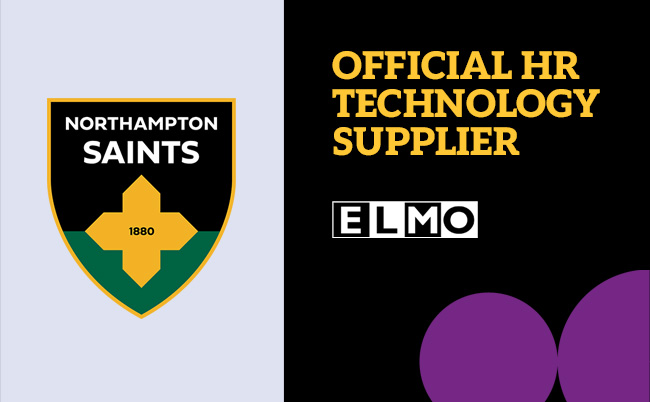The Top 5 Causes of Employee Disengagement

Employee engagement refers to the level of commitment that individuals show towards the overall growth and success of the organisation. Engaged staff are enthusiastic and contribute to the company goals, whereas disengaged workers are more likely to be unproductive, careless and take too many sick days.
Employee disengagement can be a real issue, because it acts like a virus. Disengaged workers tend to bring their colleagues down with them. This is a particularly critical issue because research suggests that only 10% of British workers are engaged at work, around thirteen percentage points less than the global average.
But it’s important to be aware that employee disengagement doesn’t come from nowhere. There are many reasons it can occur and there are plenty of steps that a proactive HR team can take to reduce it as much as possible. That’s precisely what we discuss in this blog.
What causes employee disengagement at work
1. Unsatisfactory Pay
According to research, only 32% of UK employees believe they’re being paid fairly. For the remaining two-thirds, therefore, pay is clearly going to be a contributing factor to how they’re feeling.
This is a difficult one to admit because few HR teams have control over how much their employees are paid. Ultimately, these decisions are made by the executive team – and it’s your job to make the pill look palatable, however bitter it may be.
But if you’re suffering from low employee engagement or high turnover, this is the most obvious problem to address. A sensible HR team should be able to analyse the salaries the company gives out and compare that to how similarly-qualified professionals in the same industry would expect to be paid elsewhere. While you can’t unilaterally decide to raise salaries, you can bring this information to the C-suite’s attention if it becomes a cause for concern.
Salaries: How can HR teams get it right?
If talented employees can easily get a better deal with your competitors, then you should try to make the case for better salaries to the executive team. Generally, a pay rise for one employee is going to be much cheaper than replacing them entirely – so there is a clear business imperative here.
2. Lack of career development
Wanting to learn, grow and develop at work is a natural human instinct. In fact, as many as 66% of UK workers said they’d consider quitting their job within 12 months if career-focused L&D support was cut.
If talented employees feel they’ve hit a ceiling, they might start wondering what’s in it for them. As psychologist Daniel Pink mentions in his book Drive – autonomy, mastery and purpose are really the key psychological needs that employees are looking to fill at work. They want to learn, be engaged and face challenges they can overcome.
Career development: How can HR teams get it right?
The best approach is to ensure every employee has a bespoke career plan based on their unique skills and goals. You should work with line managers to ensure there is space for this discussion and that these goals are tied to performance.
Ideally, every employee should have a clear direction of travel for their career over the next two years. They should also collaborate with line managers to identify the targets and learning goals they’ll need to complete in the meantime to get them there.
3. Poor management
Ineffective management is a huge cause of employee disengagement. This is a big issue for many companies because, once you’ve hired a poor manager, it’s pretty difficult to mitigate the consequences. This is made harder by the fact that managers can be ineffectual for a whole range of different reasons.
In the UK, only 27% of workers describe their managers as highly effective. The same research revealed that about 50% of those workers who didn’t rate their manager were likely to leave in the next year.
Here are some more disturbing stats: As many as 85% of new managers don’t get any training before being a manager and 59% don’t feel they’re supported in their new role.
This is much of the issue with poor management. Individual contributors are often valued for their attention to detail, productivity and technical prowess. When they get promoted to managers, they have to learn entirely new skills to deliver in the job. This can lead to them being overly focused on the details and hyper-critical of their direct reports because they worry that any poor performance will reflect badly on them as a manager.
Of course, these aren’t the only types of poor management. Bosses can be too laid back, too disorganised, too harsh or downright abusive. Each of these issues has its own solution.
Career development: How can HR teams get it right?
Improving the quality of managers isn’t an easy task and getting it right requires a multi-pronged approach:
- Establish an anonymous complaints system that all employees can access. This will make it easier to identify potentially abusive or problematic behaviour.
- Provide training for all managers on communication, feedback, organisation and other vital soft skills.
- Require all managers to have regular meetings with their direct reports to discuss targets, feedback and career goals. These conversations should be quantified and reported to HR.
- Encourage managers to publicly commend and recognise outstanding behaviour among their teams.
- Create a performance management process that can identify poor managers and diagnose solutions. These could involve more training, mentoring from skilled peers or potentially removal if these measures fail. Ultimately, poor managers shouldn’t be allowed to stay in place indefinitely.
Read more: How to Identify Employee Training Needs.
4. Stress, burnout and overworking
Recent research from our sister company Breathe suggests that only 35% of UK workers use all their holiday days and that 17% had 5 or more unused days at the end of the year. At the same time, as many as 57% admit to working ‘sometimes’ or ‘often’ while on annual leave.
Needless to say, this isn’t good for either the employee or the organisation. The same study found that as many as 81% of employees said that they noticed increasing feelings of burnout, exhaustion or poor mental health when they can’t take time off work.
The leading causes of this situation were staff shortages, feeling too busy and worrying about how it would reflect on performance. In a difficult economic backdrop, it’s clear that employees are feeling the pressure.
Career development: How can HR teams get it right?
There are many causes of these challenges and not all of them are down to employers. But either way, it’s important to encourage employees to take their time off and disconnect when they do. Here are some practical tips to achieve that:
- Define clear policies for who can take time off, how many can do so at the same time and in how much advance they need to submit requests. This will help employees plan, thus avoiding potential disappointment and conflict.
- Encourage managers to lead by example – There shouldn’t be one rule for executives and another for everybody else; this will only encourage individual contributors to follow their managers’ lead. Influential business leaders should regularly take time off and announce they’ll be disconnecting while they do.
- Remind people to take time off and disconnect – This can be an email, an announcement or just a friendly word in the office. As an HR team, it’s your job to define what is and isn’t seen as acceptable at the organisation.
- Take advantage of HR software – HR software can make it much easier for employees to book holiday and for managers to sign it off. This takes some of the awkwardness out of the conversation and holds managers to account if they’re being obtrusive or disorganised.
Read more: Managing Workplace Stress and Fatigue: A Practical Guide for Employers.
5. The employee, role and company aren’t a good match
All the goodwill and employee engagement in the world can’t eliminate disengaged workers entirely. Some employees just aren’t going to be right for the company they’re working for or the job they’re in. There are several reasons this could be:
- They’ve hit a ceiling and are ready for their next challenge, but there isn’t room in the company for the role they want to take on.
- The company has changed since they joined and they no longer feel they agree with its values, culture or priorities.
- The company has taken a different strategic direction and the employee’s particular skillset isn’t as valuable as it once was.
- The employee simply doesn’t care much about the company or their wider team. They put in as little effort as they can get away with and bring the rest of their colleagues down with them.
Employee disengagement: How can HR teams get it right?
Where possible, you should obviously try and keep employees in the business wherever possible. If they’re not engaged, you can explore performance management, moving them into a new role or giving them some new responsibilities. But ultimately, if none of these work, it may be time for the employee and company to part ways.
Engagement is the gift that keeps on giving
The most important thing to note about employee engagement is this: The best employees encourage those around them. They bring positivity and a ‘can do’ attitude to the workplace and they want to be surrounded by other skilled colleagues that do the same. These employees are therefore hugely valuable to the company.
But naturally, the opposite is true for low-engagement employees. They make life difficult for their colleagues who see them as an obstacle to their own targets and goals. That’s why it’s so important that HR teams can identify when low engagement is happening and eliminate it wherever possible.
The techniques we’ve discussed in this blog go a long way to helping you achieve that. But crucially, having the right technology can also make a huge difference in identifying disengaged employees and diagnosing the solution.
Tools like ELMO Performance can help you create a single, objective standard for how reviews, target-setting and appraisals are delivered across the company. This includes features such as:
- Configurable workflows for appraisal cycles.
- Customisable notifications for managers and employees.
- Multiple levels of sign-off and approvals.
- Comprehensive libraries of goals, development objectives and competencies.
Ready to explore performance further? Read the ELMO Performance page to find out more.
 HR Core
HR Core 









